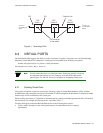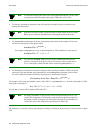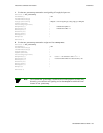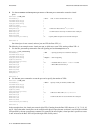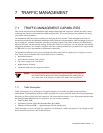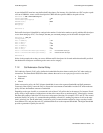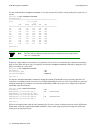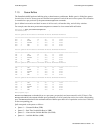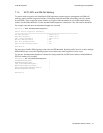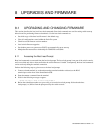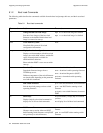SmartSwitch 6500 User Guide 7-3
Traffic Management Traffic Management Capabilities
A user-defined PVC must have user-defined traffic descriptors. For instance, if a video link over a PVC requires a peak
cell rate of 8000 kb/s, create a traffic descriptor for CBR traffic that specifies 8000 as the peak cell rate.
Smart6500 # add trafficdescriptor
TrafficType(UBR) : cbr
TrafficDescriptorType(2) :3
PCRCLP01(100) :8000
QOSCLASS(1) :
AalType(5) :
Smart6500 #
Each traffic descriptor is identified by a unique index number. Use the index number to specify which traffic descriptor
to use when setting up a PVC. For example, the
add pvc command prompts you for the traffic descriptor index.
Smart6500 # add pvc
ConnType(PTP) :
Port-1-Number() : 7a1
Port-1-VPCI() : 0
Port-1-VCI() : 100
Port-2-Number() : 7b2
Port-2-VPCI() : 0
Port-2-VCI() : 100
Port1-to-Port2TrafficDescriptorIndex() : 3
< Forward traffic descriptor
Port2-to-Port1TrafficDescriptorIndex() : 2
< Backward traffic descriptor
Smart6500 #
Notice in the example above that you can use different traffic descriptors for forward and backward traffic provided
that both traffic descriptors used belong to the same service category.
7.1.2 Call Admission Control Policy
Call Admission Control (CAC) policy defines the bandwidth allocation scheme used by the CAC when setting up
connections. The SmartSwitch 6500 offers three schemes that can be set on a per-port, per-service class basis,
•
Conservative
•
Moderate
•
Liberal
Under conservative policy, the CAC allocates bandwidth closest to the requested bandwidth and QoS parameters.
Conversely, liberal policy causes the CAC to allocate the least amount of bandwidth. And the CAC under moderate
policy allocates intermediate amounts of bandwidth.
Depending on the type of traffic on your network, each of these CAC policies has its advantages. For instance, liberal
policy allows a larger number of connections over that of the conservative or moderate policy. Liberal policy assumes
that the traffic pattern of individual VCs does not overlap most of the time. For example, if VC1 and VC2 are created
under the liberal CAC policy, it’s assumed that the probability of both VCs sending large bursts of cells at the same
time is relatively low. On the other hand, conservative policy assumes that there might be a larger overlap of traffic
from different VCs, and provides each VC with bandwidth closer to the requested bandwidth. This higher bandwidth
provides a guarantee of quality for each VC.



